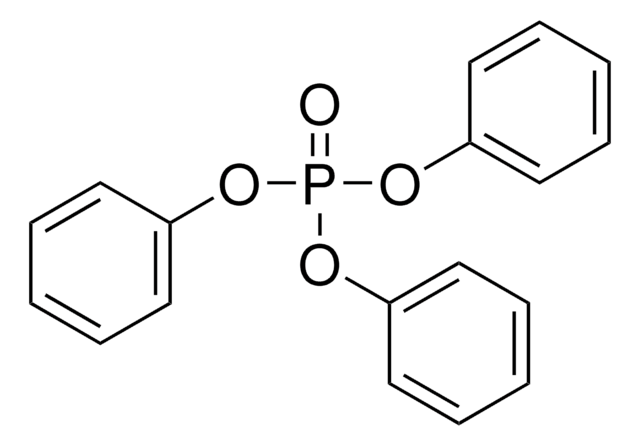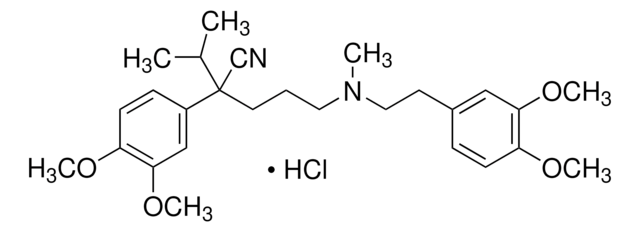PHR1217
1-Pentanol
Pharmaceutical Secondary Standard; Certified Reference Material
Sinonimo/i:
n-Amyl alcohol, Pentyl alcohol
About This Item
Prodotti consigliati
Grado
certified reference material
pharmaceutical secondary standard
Livello qualitativo
agenzia
traceable to USP 1504955
Densità del vapore
3 (vs air)
Tensione di vapore
1 mmHg ( 13.6 °C)
1.5 mmHg ( 20 °C)
CdA
current certificate can be downloaded
Limite di esplosione
10 %, 100 °F
tecniche
HPLC: suitable
gas chromatography (GC): suitable
Indice di rifrazione
n20/D 1.409 (lit.)
P. ebollizione
136-138 °C (lit.)
Punto di fusione
−78 °C (lit.)
Densità
0.811 g/mL at 25 °C (lit.)
applicazioni
pharmaceutical (small molecule)
Formato
neat
Temperatura di conservazione
2-30°C
Stringa SMILE
CCCCCO
InChI
1S/C5H12O/c1-2-3-4-5-6/h6H,2-5H2,1H3
AMQJEAYHLZJPGS-UHFFFAOYSA-N
Cerchi prodotti simili? Visita Guida al confronto tra prodotti
Descrizione generale
Applicazioni
Risultati analitici
Altre note
Nota a piè di pagina
Avvertenze
Danger
Indicazioni di pericolo
Classi di pericolo
Acute Tox. 4 Inhalation - Eye Dam. 1 - Flam. Liq. 3 - Skin Irrit. 2 - STOT SE 3
Organi bersaglio
Respiratory system
Codice della classe di stoccaggio
3 - Flammable liquids
Classe di pericolosità dell'acqua (WGK)
WGK 1
Punto d’infiammabilità (°F)
120.2 °F - closed cup
Punto d’infiammabilità (°C)
49 °C - closed cup
Certificati d'analisi (COA)
Cerca il Certificati d'analisi (COA) digitando il numero di lotto/batch corrispondente. I numeri di lotto o di batch sono stampati sull'etichetta dei prodotti dopo la parola ‘Lotto’ o ‘Batch’.
Possiedi già questo prodotto?
I documenti relativi ai prodotti acquistati recentemente sono disponibili nell’Archivio dei documenti.
I clienti hanno visto anche
Protocolli
-Butanol; 2-Methyl-2-butanol; 2-Methyl-1-butanol; 3-Pentanol; 1-Butanol; 2-Methyl-1-propanol; 2-Pentanol, 98%; 3-Methyl-1-butanol; 1-Propanol
Il team dei nostri ricercatori vanta grande esperienza in tutte le aree della ricerca quali Life Science, scienza dei materiali, sintesi chimica, cromatografia, discipline analitiche, ecc..
Contatta l'Assistenza Tecnica.
















